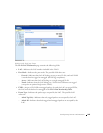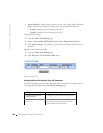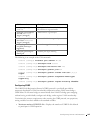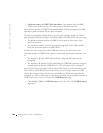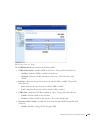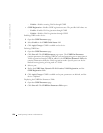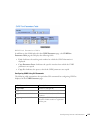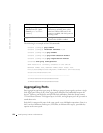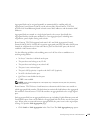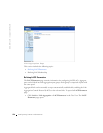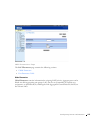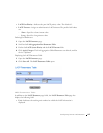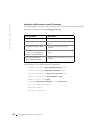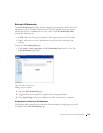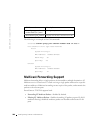
Configuring Switch Information 273
Aggregated links can be assigned manually or automatically by enabling the Link
Aggregation Control Protocol (LACP) on the relevant links. PowerConnect 3324/3348
provides LAG Load Balancing based on both source MAC addresses and destination MAC
addresses.
Aggregated links are treated as a single logical port by the system. Specifically, the
Aggregated link has similar port attributes to a non-aggregated port, including auto-
negotiation, speed, duplex setting, and so forth.
PowerConnect 3324/3348 supports both static LAGs and Link Aggregation Control
Protocol (LACP) LAGs. LACP LAGs negotiate aggregated port links with other LACP ports
located on a different device. If the other device ports are also LACP ports, the devices
establish a LAG between them.
Use the following guidelines when adding ports to a LAG for either a standalone or a
stacking configuration:
• No Layer 3 interface is defined on the port.
• The port does not belong to any VLAN.
• The port does not belong to any other LAG.
• The port is not a mirrored port.
• The port's 802.1p priority is equal to the LAG’s 802.1p priority.
• No ACL is defined on the port.
• QoS Trust in not disabled on the port.
• GVRP is not enabled.
NOTE: Ports can be configured as LACP ports only if the ports are not part of a previously
configured LAG.
PowerConnect 3324/3348 uses a hash function to determine which frames are carried on
which aggregated-link member. The hash function statistically load-balances the aggregated
link members. PowerConnect 3324/3348 considers an aggregated link to be a single logical
port.
Each aggregated link has an aggregated link port type, including Gigabit Ethernet ports and
Fast Ethernet ports. Ports can be added to an aggregated link only if they are the same port
type. When ports are removed from an aggregated link, the ports revert to the original port
settings. To open the Link Aggregation page:
•Click Switch > Link Aggregation in the Tree View. The Link Aggregation page opens.



